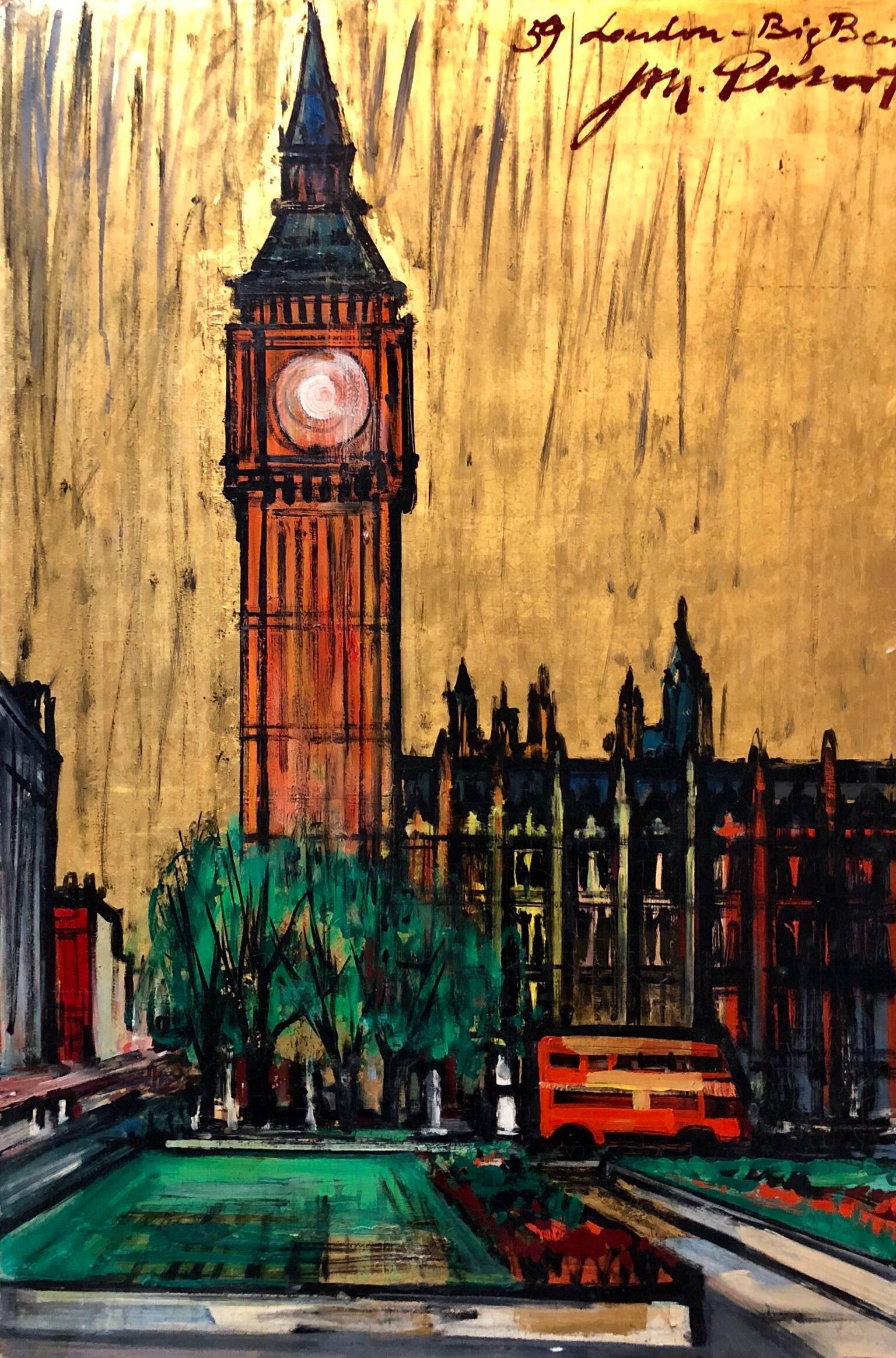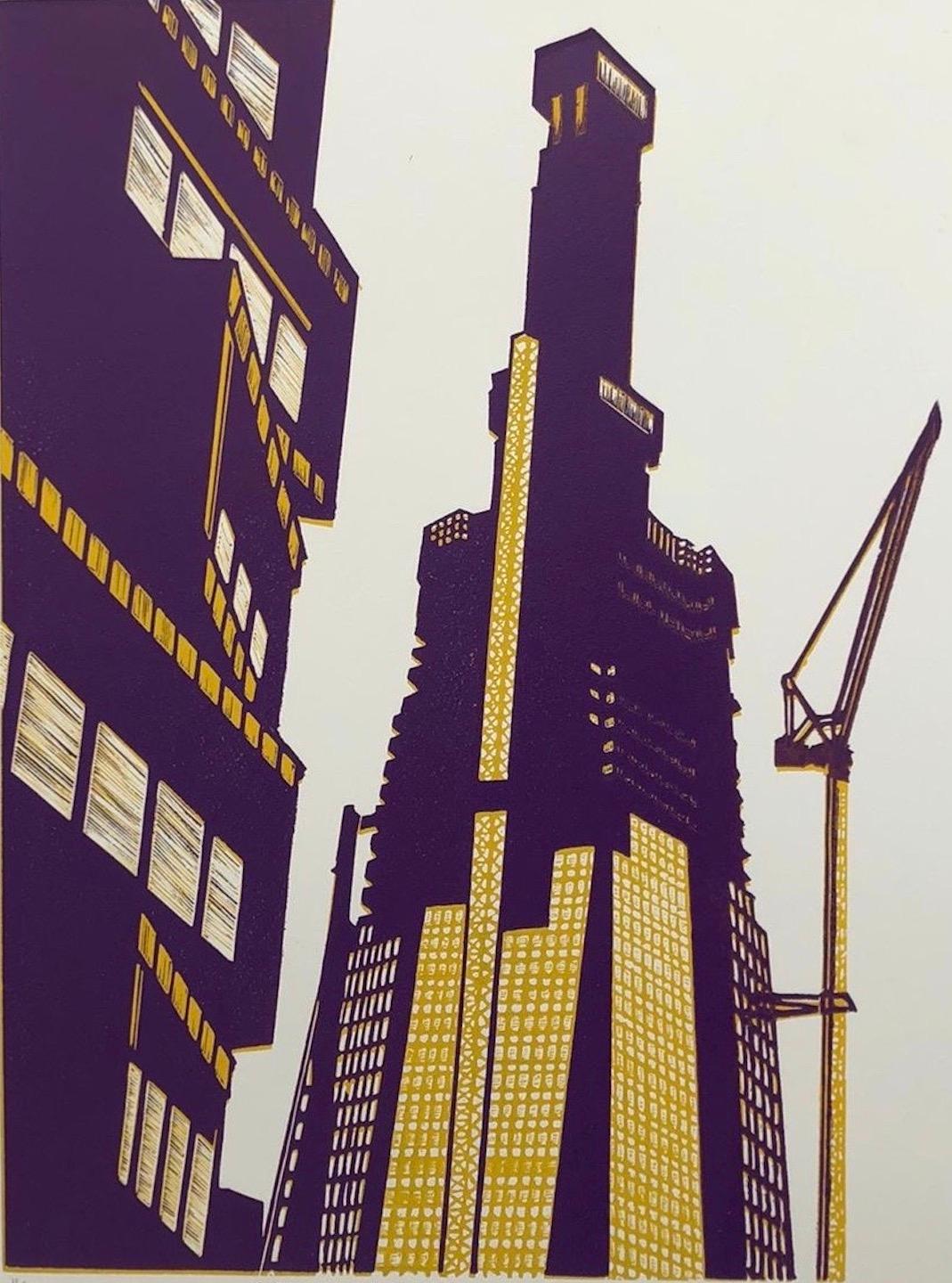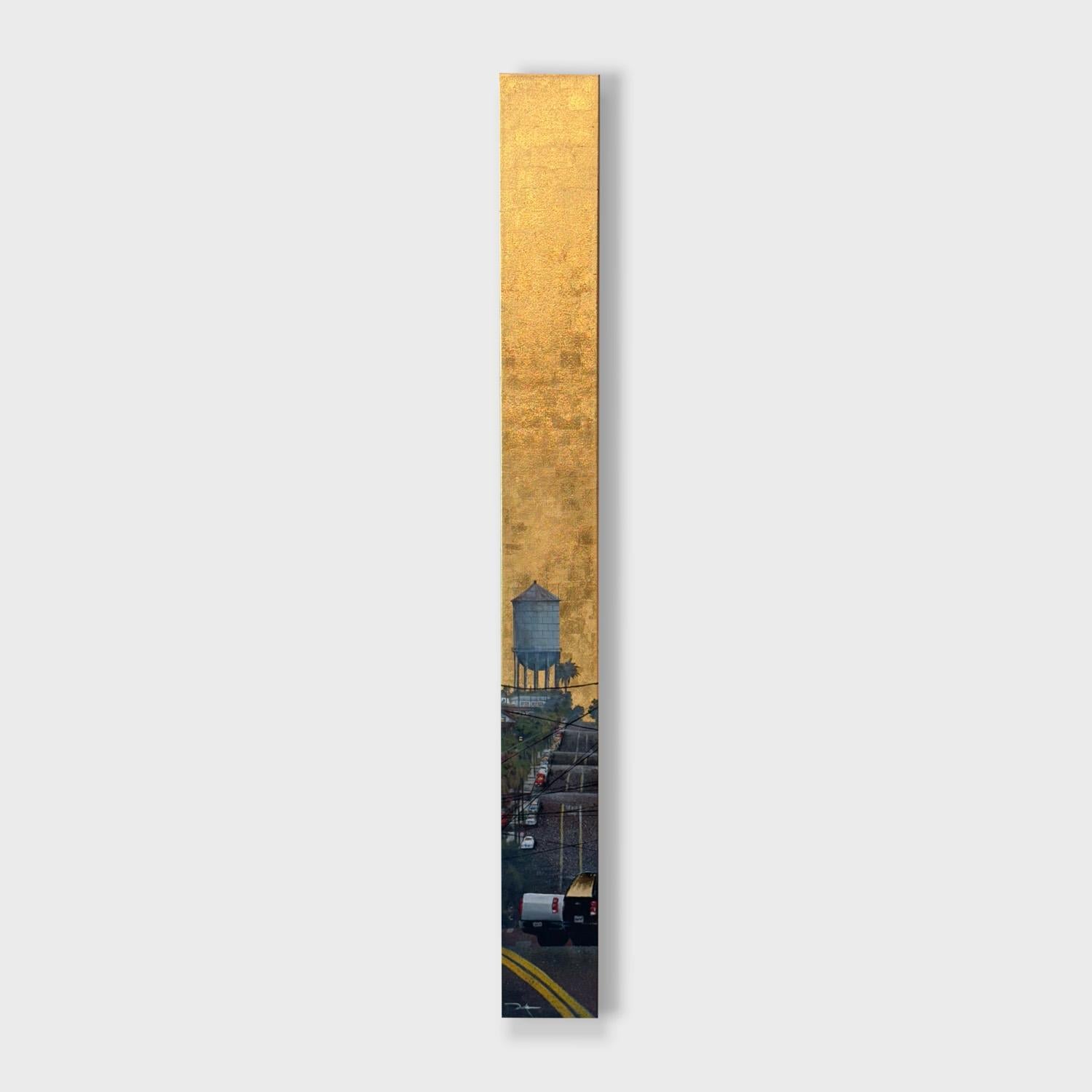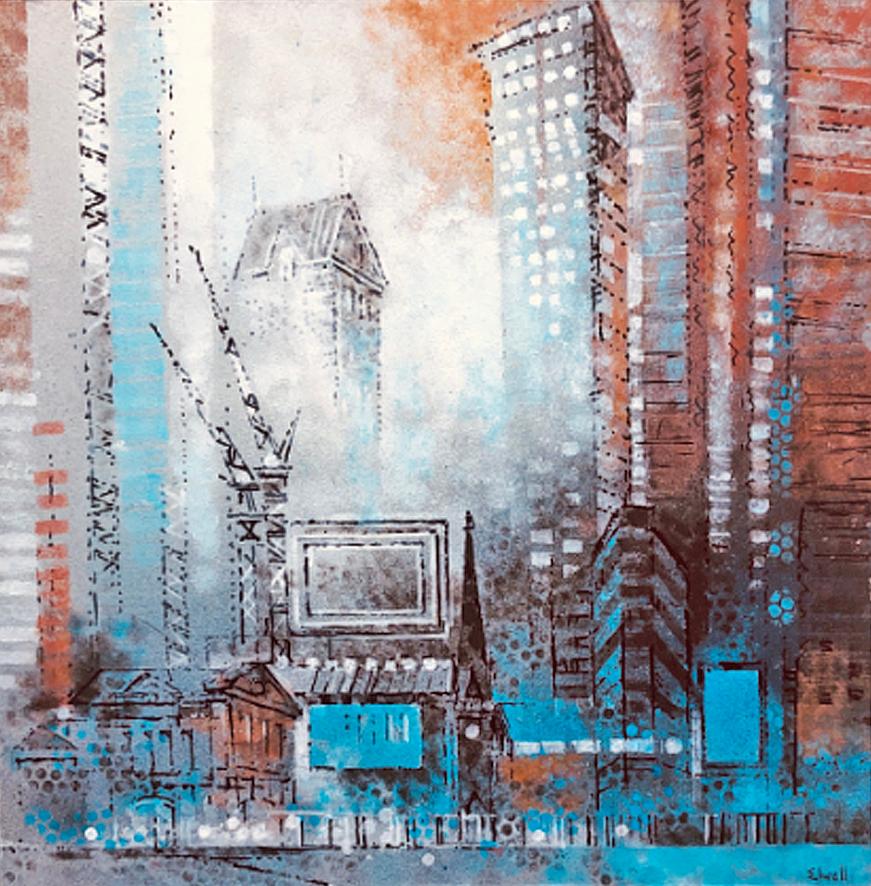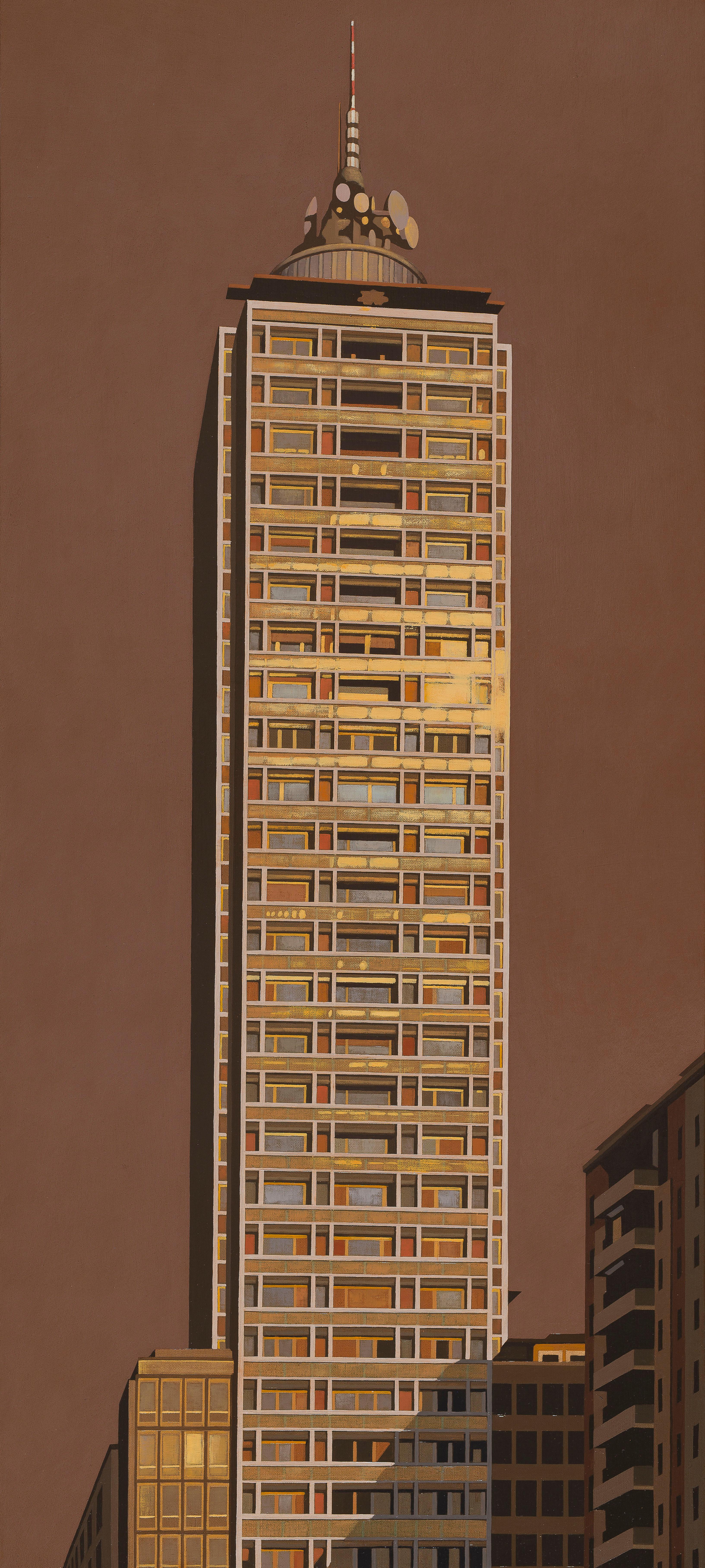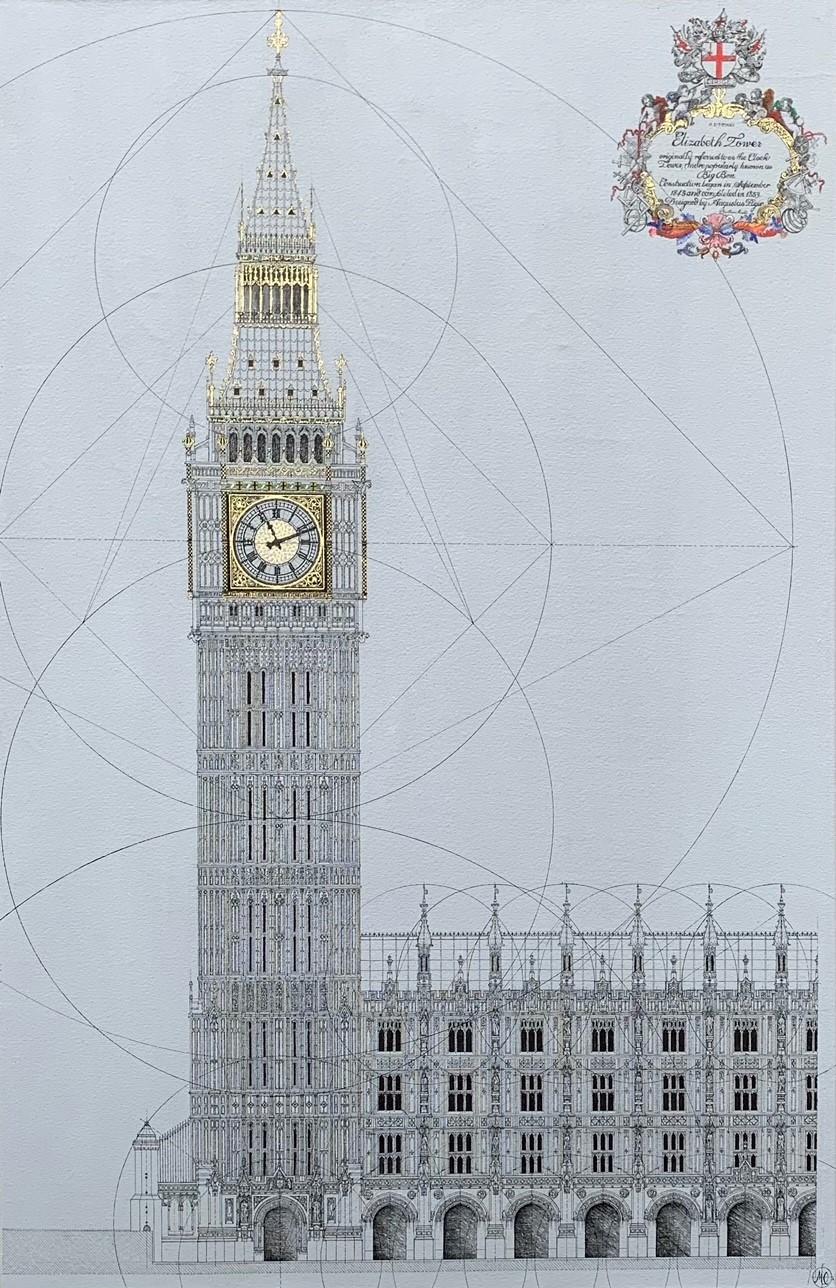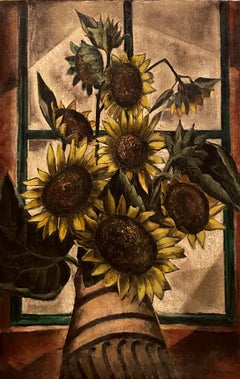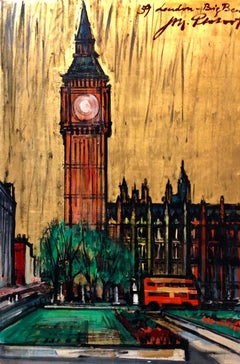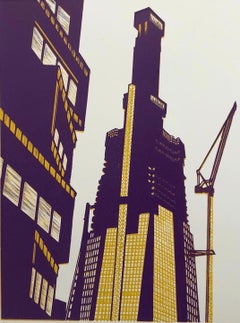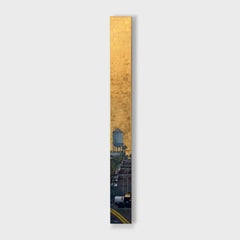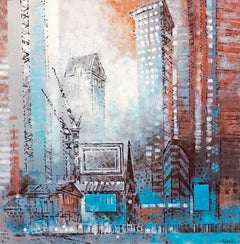Items Similar to "Post Office Tower, London, " Daniel Rich, Contemporary Precisionism, Yellow
Want more images or videos?
Request additional images or videos from the seller
1 of 6
Daniel Rich"Post Office Tower, London, " Daniel Rich, Contemporary Precisionism, Yellow2004
2004
$30,000
£22,904.87
€26,466.37
CA$42,114.32
A$46,940.80
CHF 24,628.23
MX$573,223.68
NOK 311,846.90
SEK 294,742.75
DKK 197,530.04
About the Item
Daniel Rich (German, b. 1977)
Post Office Tower, London, UK, 2004
Enamel on wood
60 x 60 1/8 inches
Signed, dated, and titled in black marker on verso
Provenance:
Elizabeth Dee Gallery, New York
Collection of Mr. and Mrs. Eckstrakt, New York
Private Collection, New York, 2016
- Creator:Daniel Rich (1977, American, German)
- Creation Year:2004
- Dimensions:Height: 60 in (152.4 cm)Width: 60 in (152.4 cm)
- Medium:
- Movement & Style:
- Period:
- Condition:
- Gallery Location:New York, NY
- Reference Number:1stDibs: LU184129986102
About the Seller
5.0
Platinum Seller
Premium sellers with a 4.7+ rating and 24-hour response times
Established in 2022
1stDibs seller since 2022
115 sales on 1stDibs
Typical response time: <1 hour
- ShippingRetrieving quote...Shipping from: New York, NY
- Return Policy
Authenticity Guarantee
In the unlikely event there’s an issue with an item’s authenticity, contact us within 1 year for a full refund. DetailsMoney-Back Guarantee
If your item is not as described, is damaged in transit, or does not arrive, contact us within 7 days for a full refund. Details24-Hour Cancellation
You have a 24-hour grace period in which to reconsider your purchase, with no questions asked.Vetted Professional Sellers
Our world-class sellers must adhere to strict standards for service and quality, maintaining the integrity of our listings.Price-Match Guarantee
If you find that a seller listed the same item for a lower price elsewhere, we’ll match it.Trusted Global Delivery
Our best-in-class carrier network provides specialized shipping options worldwide, including custom delivery.More From This Seller
View All"Empire State Building" Leon Dolice, New York City Street Scene, Mid-Century
By Leon Dolice
Located in New York, NY
Leon Dolice
Empire State Building
Signed lower right
Watercolor on paper
19 x 12 inches
The romantic backdrop of Vienna at the turn of the century had a life-long influence upon th...
Category
1930s American Modern Figurative Drawings and Watercolors
Materials
Paper, Pastel
"Sunflowers, " Frank London, Modernist Yellow Floral Still Life with Window
Located in New York, NY
Frank Marsdon London (1876 - 1945)
Sunflowers
Oil on canvas
31 x 22 inches
Signed lower right
Exhibited:
Pittsburgh, Carnegie Museum of Art.
Frank Marsden London was born in the small Southern town of Pittsboro in central North Carolina in 1876. When he reached adulthood, London attended the University of North Carolina...
Category
1920s American Modern Still-life Paintings
Materials
Canvas, Oil
"Study for Blue and Gold III, " Matthew Radford, British Abstract Painting
Located in New York, NY
Matthew Radford (British, b. 1953)
Study for Blue and Gold III, 1989
Oil on canvas
30 x 10 inches
Signed on the reverse
Provenance:
Frank Bernarducci ...
Category
1980s Abstract Expressionist Abstract Paintings
Materials
Canvas, Oil
"From World Trade Center: Mixed Heights", Yvonne Jacquette, New York City Scene
By Yvonne Jacquette
Located in New York, NY
Yvonne Jacquette
From World Trade Center: Mixed Heights, 1997-98
Pastel on paper
30 x 22 inches
Yvonne Jacquette was born on December 15, 1934 in Pittsburgh, Pennsylvania and grew ...
Category
1990s Modern Landscape Paintings
Materials
Paper, Pastel
"Cronus Dining" David Hare, Yellow & White Mythological Surrealist Composition
By David Hare
Located in New York, NY
David Hare
Cronus Dining, 1968
Graphite, acrylic, paper collage on board
44 x 34 inches
“Freedom is what we want,” David Hare boldly stated in 1965, but then he added the caveat, “and what we are most afraid of.” No one could accuse David Hare of possessing such fear. Blithely unconcerned with the critics’ judgments, Hare flitted through most of the major art developments of the mid-twentieth century in the United States. He changed mediums several times; just when his fame as a sculptor had reached its apogee about 1960, he switched over to painting. Yet he remained attached to surrealism long after it had fallen out of official favor. “I can’t change what I do in order to fit what would make me popular,” he said. “Not because of moral reasons, but just because I can’t do it; I’m not interested in it.”
Hare was born in New York City in 1917; his family was both wealthy and familiar with the world of modern art. Meredith (1870-1932), his father, was a prominent corporate attorney. His mother, Elizabeth Sage Goodwin (1878-1948) was an art collector, a financial backer of the 1913 Armory Show, and a friend of artists such as Constantin Brancusi, Walt Kuhn, and Marcel Duchamp.
In the 1920s, the entire family moved to Santa Fe, New Mexico and later to Colorado Springs, in the hope that the change in altitude and climate would help to heal Meredith’s tuberculosis. In Colorado Springs, Elizabeth founded the Fountain Valley School where David attended high school after his father died in 1932. In the western United States, Hare developed a fascination for kachina dolls and other aspects of Native American culture that would become a recurring source of inspiration in his career.
After high school, Hare briefly attended Bard College (1936-37) in Annandale-on-Hudson. At a loss as to what to do next, he parlayed his mother’s contacts into opening a commercial photography studio and began dabbling in color photography, still a rarity at the time [Kodachrome was introduced in 1935]. At age 22, Hare had his first solo exhibition at Walker Gallery in New York City; his 30 color photographs included one of President Franklin Roosevelt.
As a photographer, Hare experimented with an automatist technique called “heatage” (or “melted negatives”) in which he heated the negative in order to distort the image. Hare described them as “antagonisms of matter.” The final products were usually abstractions tending towards surrealism and similar to processes used by Man Ray, Raoul Ubac, and Wolfgang Paalen.
In 1940, Hare moved to Roxbury, CT, where he fraternized with neighboring artists such as Alexander Calder and Arshile Gorky, as well as Yves Tanguy who was married to Hare’s cousin Kay Sage, and the art dealer Julian Levy. The same year, Hare received a commission from the American Museum of Natural History to document the Pueblo Indians. He traveled to Santa Fe and, for several months, he took portrait photographs of members of the Hopi, Navajo, and Zuni tribes that were published in book form in 1941.
World War II turned Hare’s life upside down. He became a conduit in the exchange of artistic and intellectual ideas between U.S. artists and the surrealist émigrés fleeing Europe. In 1942, Hare befriended Andre Breton, the principal theorist of surrealism. When Breton wanted to publish a magazine to promote the movement in the United States, he could not serve as an editor because he was a foreign national. Instead, Breton selected Hare to edit the journal, entitled VVV [shorth for “Victory, Victory, Victory”], which ran for four issues (the second and third issues were printed as a single volume) from June 1942 to February 1944. Each edition of VVV focused on “poetry, plastic arts, anthropology, sociology, (and) psychology,” and was extensively illustrated by surrealist artists including Giorgio de Chirico, Roberto Matta, and Yves Tanguy; Max Ernst and Marcel Duchamp served as editorial advisors.
At the suggestion of Jacqueline Lamba...
Category
1960s Abstract Abstract Paintings
Materials
Paper, Acrylic, Graphite
"Jean Jean" Larry Zox, Color Field, Geometric Abstraction, Hard-Edge, Yellow
By Larry Zox
Located in New York, NY
Larry Zox
Jean Jean, 1964
Signed, dated, and titled on the stretcher
Liquitex on canvas
58 x 62 inches
Provenance:
Solomon & Co., New York
Private Collection, NJ
Estate of the above, 2023
Committed to abstraction throughout his career, Larry Zox played a central role in the Color Field discourse of the 1960s and 1970s. His work of the time, consisting of brilliantly colored geometric shapes in dynamic juxtapositions, demonstrated that hard-edge painting was neither cold nor formalistic. He reused certain motifs, but he did so less to explore their aspects than to “get at the specific character and quality of each painting in and for itself,” as James Monte stated in his essay for Zox’s solo exhibition at the Whitney Museum of American Art in 1973. By the 1970s, Zox was using a freer, more emotive method, while maintaining the autonomy of color, which increasingly became more important to him than structure in his late years.
Zox began to receive attention in the 1960s, when he was included in several groundbreaking exhibitions of Color Field and Minimalist art, including Shape and Structure (1965), organized by Henry Geldzahler for the Gallery of Modern Art, New York, and Systemic Painting (1966), organized by Lawrence Alloway for the Guggenheim Museum. In 1973, the Whitney’s solo exhibition of Zox’s work gave recognition to his significance in the art scene of the preceding decade. In the following year, Zox was represented in the inaugural exhibition of the Hirshhorn Museum, which owns fourteen of his works.
Zox was born in Des Moines, Iowa. He attended the University of Oklahoma and Drake University. While studying at the Des Moines Art Center, he was mentored by George Grosz, who despite his own figurative approach encouraged Zox’s forays into abstraction. In 1958, Zox moved to New York, joining the downtown art scene. His studio on 20th Street became a gathering place for artists, jazz musicians, bikers, and boxers. He occasionally sparred with the visiting fighters. He later established a studio in East Hampton, where he painted and fished including using a helicopter to spot fish.
In the 1950s and early 1960s, Zox’s works were collages consisting of painted pieces of paper stapled onto sheets of plywood. He then produced paintings that were illusions of collages, including both torn- and trued-edged forms, to which he added a wide range of intense hues that created ambiguous surfaces. Next, he omitted the collage aspect of his work and applied flat color areas to create more complete statements of pure color and shape.
From 1962 to 1965, he produced his Rotation Series, at first creating plywood and Plexiglas reliefs, which turned squares into dynamic polygons. He used these shapes in his paintings as well, employing white as a foil between colors to produce negative spaces that suggest that the colored shapes had only been cut out and laid down instead of painted. The New York Times noted in 1964: “The artist is hip, cool, adventurous, not content to stay with the mere exercise of sensibility that one sees in smaller works.”
In 1965, he began the Scissors Jack...
Category
1960s Abstract Geometric Abstract Paintings
Materials
Canvas, Acrylic
$64,000 Sale Price
20% Off
You May Also Like
London, Big Ben Cityscape Mid Century Architectural Modernist Gold Leaf
By Josef Marc Plotast
Located in Surfside, FL
Plotast, Josef Marc (Joseph Mark)
Was born in Southbridge, Massachusetts, on August 8, 1917, studied architecture and art at various universities and art schools in France, Italy, Po...
Category
1950s Modern Landscape Paintings
Materials
Oil, Board
Jennifer Jokhoo, Shard London Bridge, Cityscape Art, Architecture Art
By Jennifer Jokhoo
Located in Deddington, GB
Jennifer Jokhoo
Shard London Bridge
Limited Edition Linocut
Edition of 25
Image Size: H 55.5m x W 38cm
Sheet Size: H 59.3cm x W 42cm
Sold Unframed
(Please note that in situ images ar...
Category
21st Century and Contemporary Contemporary Landscape Prints
Materials
Paper, Linocut
Contemporary Cityscape Acrylic Painting, "Tower Totem No. 1"
Located in San Diego, CA
This is a one-of-a-kind original acrylic and gold leaf still life painting by San Diego artist, Duke Windsor. Its dimensions are 6.5" x 60" x 2.5" in (L x H x D). It is unframed. A c...
Category
2010s Street Art Landscape Paintings
Materials
Gold Leaf
Old and New Canary - contemporary London colorful cityscape acrylic painting
By Brian Elwell
Located in London, GB
Brian's London City paintings are a response to conditions of light and scale in the ever changing urban environment of the Thames and Canary Wharf.
Category
2010s Contemporary Landscape Paintings
Materials
Acrylic, Board
Italian skyscraper viewin Milan of brown by metaphysic Italian painter
By Mauro Reggio
Located in Milan, IT
Mario Reggio is a contemporary Roman painter with an extraordinary ability to interpret his hometown in an innovative and metaphysical way. While Mario Reggio’s favorite subject is h...
Category
2010s Contemporary Figurative Paintings
Materials
Canvas, Oil
The Big Ben - contemporary detailed architecture London mixed media painting
By Marco Araldi
Located in London, GB
Marco’s background is in engineering and architecture, making him familiar with mathematical design and the awareness of geometry.
Category
2010s Contemporary Landscape Paintings
Materials
Gold Leaf
